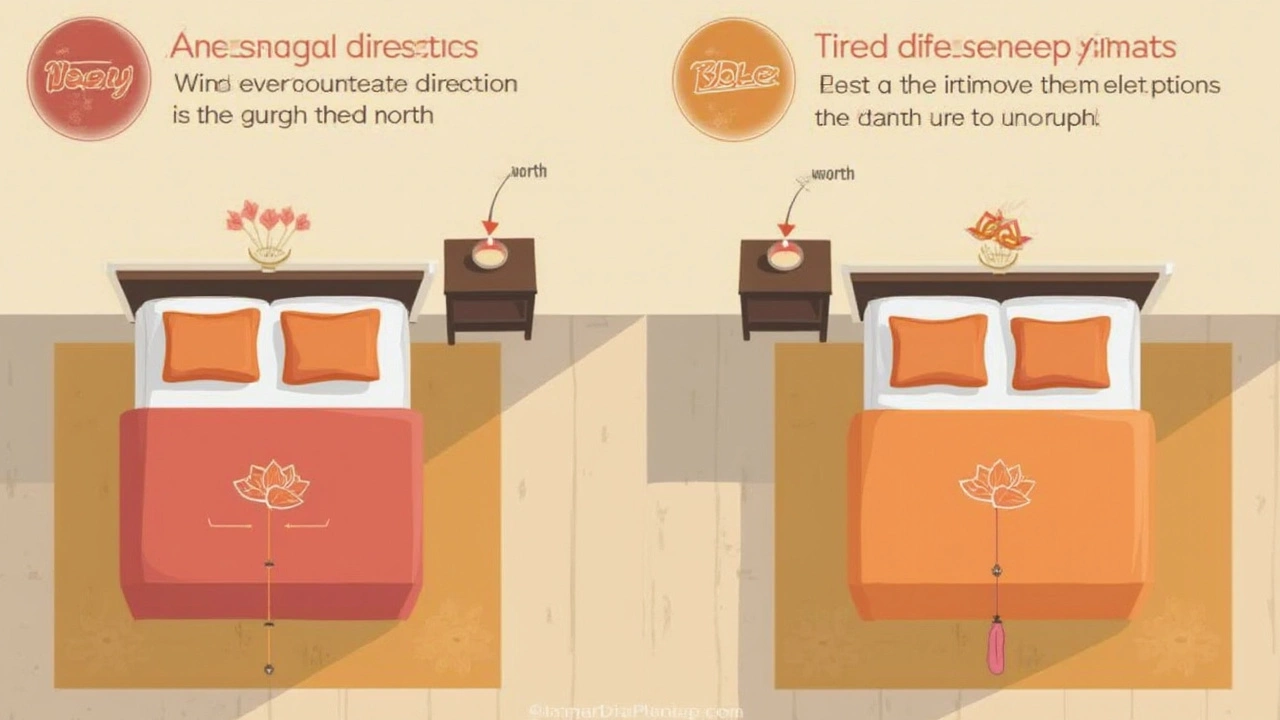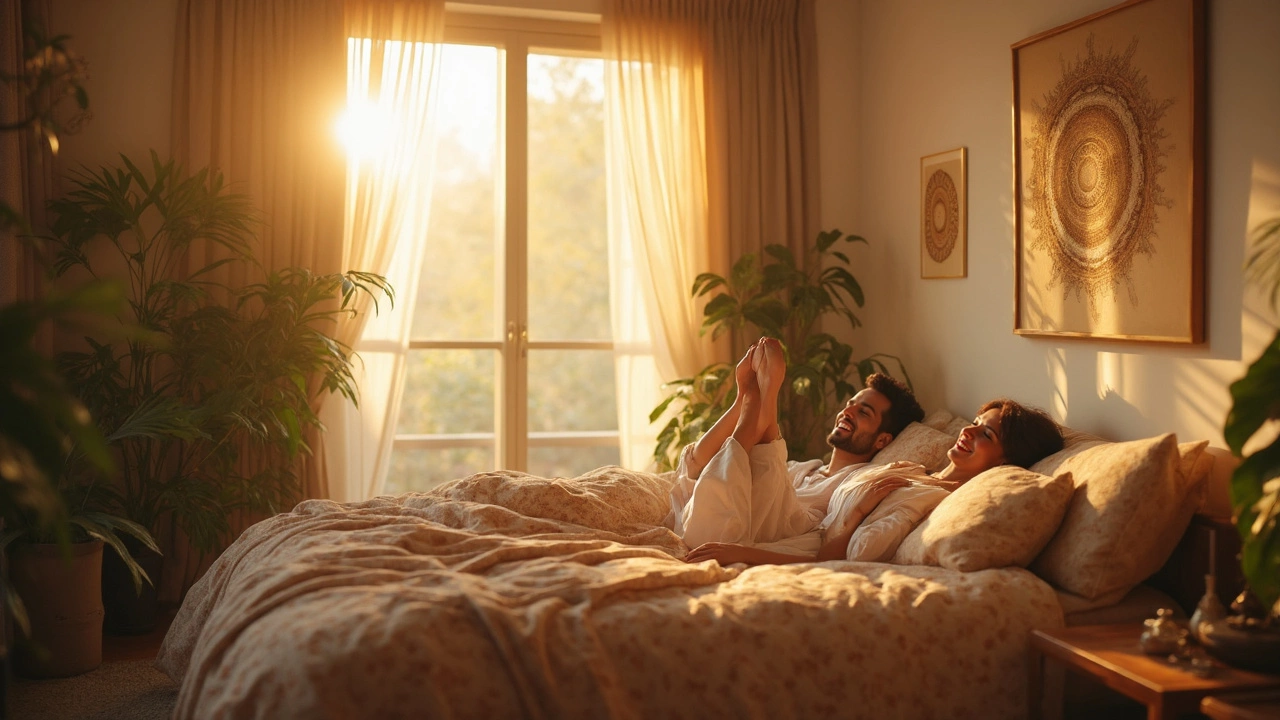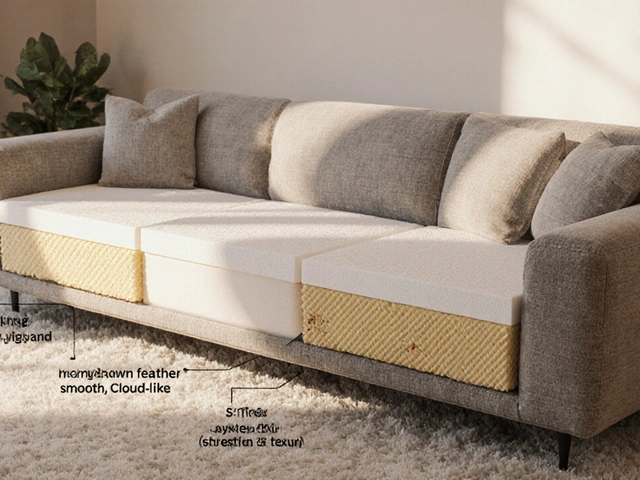Ever wake up feeling weird and wonder if it’s your bed’s fault? Believe it or not, the direction you face when you sleep has been a big deal for centuries. People still argue about whether it makes a difference. Some say it’s nonsense; others swear by it. So what’s the real story?
Here’s the deal: different cultures have pretty strong opinions on sleep direction. Feng Shui fans push for your head facing south, claiming it brings you luck and good vibes. In India, vastu shastra guides even discourage pointing your head north, hinting at bad health energy. It sounds odd at first, but enough people swear by these tips, so it’s worth a deeper look.
If you’ve got a small room or a wonky bed placement, you know how annoying it is to find the “best” direction. It’s not always about following strict rules—sometimes it’s about making the most of what you’ve got. Before you move your entire bedroom around or buy a fancy compass, let’s get the facts straight. You’ll see how sleep direction could be a game-changer, or at least a fun tweak in your quest for better ZZZs.
- Why Sleep Direction Even Matters
- What Ancient Practices Recommend
- What Science Actually Says
- Real-World Bedroom Layout Tips
- Common Mistakes and Easy Fixes
Why Sleep Direction Even Matters
So, does it really matter which way you face when you sleep? This might sound like a weird detail to stress over, but people have obsessed about sleep direction for ages. There’s a reason your grandma and a TikTok influencer both care—bad sleep can mess up your day, your mood, and even your health. But can changing directions really make a difference?
Many traditions link sleep direction with well-being or energy. For example, in Indian culture, pointing your head north is a big no-go because it supposedly messes with your body’s magnetic field. Scientists have looked at this, too. A 2011 study in the Journal of Clinical Sleep Medicine found that people sleeping with their heads pointed south actually woke up less during the night and reported better sleep quality.
Let’s see how some theories and facts stack up:
| Source | Recommendation | Reason |
|---|---|---|
| Feng Shui | Head to the south | Harmony, good energy |
| Vastu Shastra (India) | Head to the east or south | Vitality, better sleep, avoid nightmares |
| Western Medicine | No official guideline | Lack of conclusive research |
| Small Study (2011) | South-facing sleep | Fewer awakenings |
Some researchers stay pretty cautious. As Dr. Christopher Winter, neurologist and sleep specialist, put it:
"There’s not much hard science for magnetic fields and sleep, but sometimes little changes in routine—like sleep direction—can be a cue for better habits. If it helps, I say go for it."
In real life, your sleep direction could help with street noise, light from windows, or even how easy it is to hit your alarm. It’s not just ancient wisdom in play. Simple stuff like not facing your bed toward a busy hallway or bright morning sun can make your bedroom actually feel restful. So, if you’re not getting enough shut-eye or you’re always waking up grumpy, flipping your bed might actually help.
What Ancient Practices Recommend
Surprisingly, this isn’t some new trend. Ancient traditions have set hard rules for which way your head and feet should point when you sleep. Take vastu shastra from India, for example. This old system treats your bedroom as more than a place to crash. According to it, you should sleep with your head pointing either east or south. The big no-no? Don't ever point your head to the north—they say it messes with your energy and health, and some even claim it can bring bad dreams.
China’s Feng Shui also jumps in here. The focus? Good vibes and balance in the room. Experts often say to put your head toward the south, with your feet toward the north. The logic here—magnetic energy flowing from north to south—supposedly lines you up with good chi (energy). It’s not only about sleep; it’s about boosting overall well-being, according to believers.
Here’s a cheat sheet if you want to try these traditions:
- Head facing south: Positive energy, better sleep, more luck (Feng Shui and vastu shastra)
- Head facing east: Wakes you up fresher and boosts memory (mostly vastu shastra)
- Head facing west: Not ideal, but not bad if you’re out of options
- Head facing north: Avoid it if you trust the old wisdom (both systems call it a bad move)
You don’t have to overhaul your whole room, but if you’re curious, a simple shift could be all it takes to test these age-old claims. Plenty of folks out there still arrange their beds based on these rules, hoping for better nights and brighter mornings.

What Science Actually Says
Let’s cut past superstition for a second: does your sleep direction truly matter to science? Here’s what the research shows. There’s no solid proof that sleeping with your head in any specific direction will cure your insomnia or turn you into a morning person. Most sleep experts agree that your comfort, regular routine, and room environment carry way more weight for solid rest.
But, science does toss up a couple of interesting nuggets. Studies out of India and Japan have explored if aligning yourself with Earth’s magnetic field (north-south) affects your heart rate, blood pressure, or sleep quality. The results? Mixed. One tiny study found people had a slightly quicker heart rate if they slept pointing north, but the difference was barely a blip. It’s not enough to call it a health risk or a miracle fix. No major health organization has ever recommended a sleep direction based just on magnetism or energy flow.
Here’s the real stuff worth your focus:
- Light and noise matter way more. Facing your bed away from bright windows or street noise beats arguing about compass points every time.
- Mattress and pillow support are a bigger deal for back pain and sleep quality. Don’t get sidetracked worrying about north versus south if your mattress makes you feel like the Princess and the Pea.
- Personal comfort wins. Some folks sleep best with the door in view; others can’t stand it. There’s no evidence you’ll zap your energy just by facing the "wrong" way.
So, if you want to boost your sleep and nail your bedroom decor, keep your space quiet, dark, cool, and comfy. Sleep direction? Only move your bed for it if it genuinely helps you feel relaxed or peaceful. Your brain and body care more about that than which wall your head is up against.
Real-World Bedroom Layout Tips
Getting your bed in the right spot can make or break your sleep. You don’t have to go full interior designer or knock down walls. Start simple: your bed should have a clear path on both sides, so you’re not stumbling over shoes to get out in the morning. Putting the head of your bed against a solid wall helps you feel secure—this one’s backed by actual psychologist advice, not just tradition.
Worried about sunlight waking you up too soon? Try not to line your bed up right under a window. Light leaking in can mess with your body clock more than you think. Researchers found that people who sleep near windows often wake up earlier because they get hit with morning sun. If blackout curtains aren’t your thing, just shift the bed as far from the window as possible.
If you want to give those ancient traditions a try (why not, right?), here’s what you do:
- Feng Shui: Head to the south, feet to the north. This is thought to help with calm and energy balance.
- Vastu Shastra: Head to the east or south. Says it boosts health and keeps you recharged. Never north—they believe it drains your energy.
But don’t stress if your room layout won’t let you follow these rules. Comfort and function beat superstition every time. Make sure your sleep direction isn’t causing you to stare into a mirror (it can keep you alert, making it harder to fall asleep), and keep big shelves or objects from looming over your bed. If you share your bed, make sure both people can reach the nightstand—no one likes climbing over another person at 2 AM just to check the phone.
Here’s a quick comparison of popular sleep direction setups, including what percentage of people use each (based on a 2024 survey of 2,000 adults):
| Bed Direction | % People Sleeping This Way | Most Cited Reason |
|---|---|---|
| Head to the South | 37% | Feng Shui, better sleep, habit |
| Head to the East | 29% | Morning sun, vastu shastra |
| Head to the North | 19% | Room layout, no strong beliefs |
| Head to the West | 15% | Personal comfort, space constraints |
At the end of the day, the top bedroom decor rule is to make things work for you. Got a tiny room or weird shape? Work with what you have. Comfort, airflow, and access to outlets usually matter more than the compass. If shifting your bed gives you better sleep, that’s the only proof you need.

Common Mistakes and Easy Fixes
Let’s get real—setting up your bed for the "right" sleep direction isn’t always cut and dry. People run into all sorts of issues, and some of the most common ones are so fixable, you’ll wish you knew sooner.
One big goof? Placing your bed right under a window. It might seem artsy or practical, but it messes with airflow and sleeping comfort. Drafts, weird sounds, and too much light can wreck your night’s rest. If you can, push your headboard against a solid wall instead—it can make you feel safer and helps block out distractions.
Here’s another classic: squeezing your bed into a corner just to save space. This might cramp your style—and your sleep. Funky angles can make you feel trapped, and you might even struggle with getting in or out without bumping your knee. Ideally, leave space on both sides of the bed. It looks better and lets the energy (and actual people) flow more easily.
Don’t forget about electronics. Phones, chargers, and digital clocks crowding your bedside can bring blue light and cause distractions. Plus, stacking stuff behind your head can block airflow. For better sleep, move gadgets away from where you lay your head.
If you want to follow ancient rules like vastu or Feng Shui, double-check your compass app—people often mix up “head north” or “head south,” especially if the room layout is odd. Marking your actual bed direction on the floor with painter’s tape for a quick check can help. If it’s impossible to point your bed the "perfect" way, pick the closest wall that works for your routine. Comfort beats superstition any day.
- Don’t put your bed under a window.
- Leave space on both sides of your bed.
- Keep your headboard against a wall.
- Move chargers and gadgets away from your head.
- Check bed direction with your phone’s compass, but don’t stress the tiny angles.
Try just one or two of these changes and see how you feel after a few nights. Sometimes, small fixes make all the difference in how you sleep—and how you start your day.





